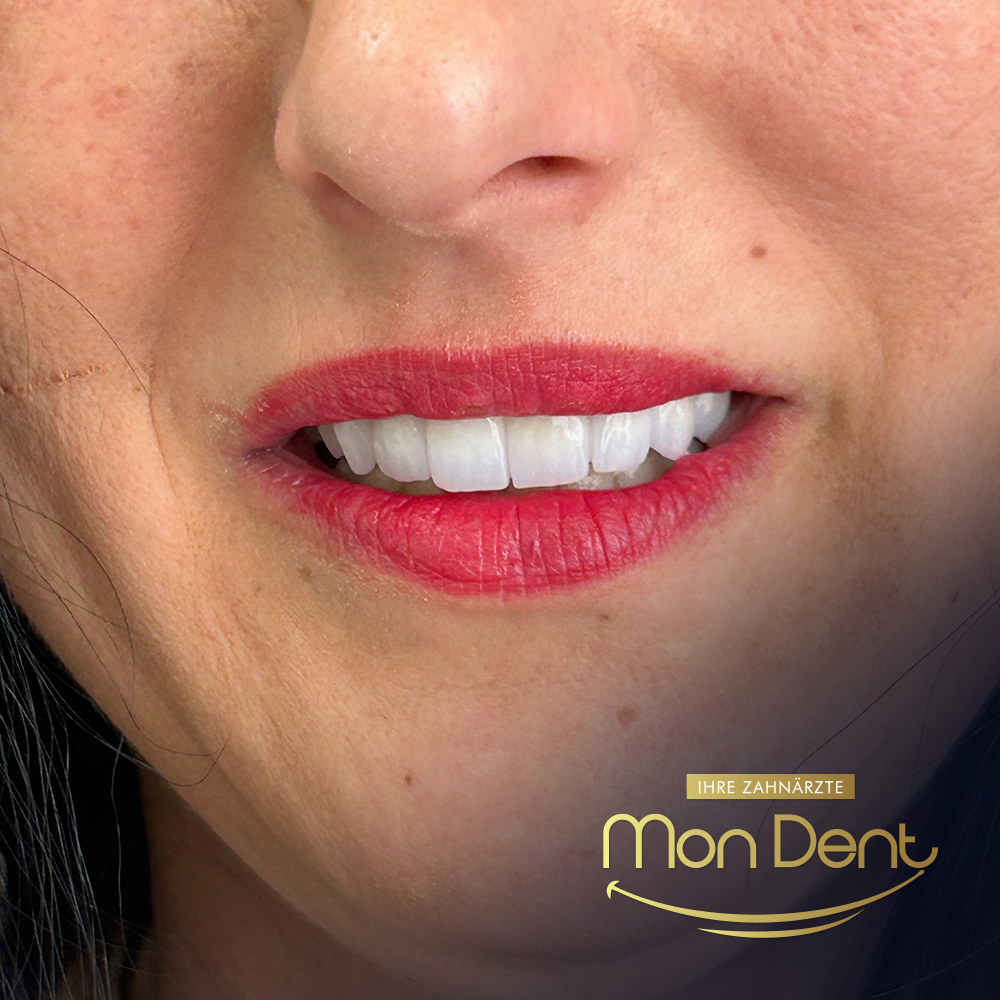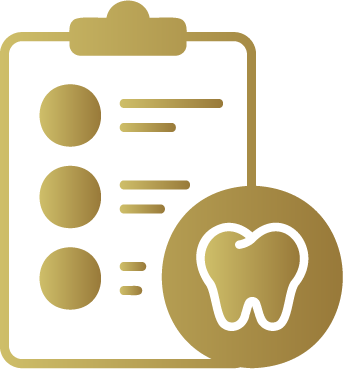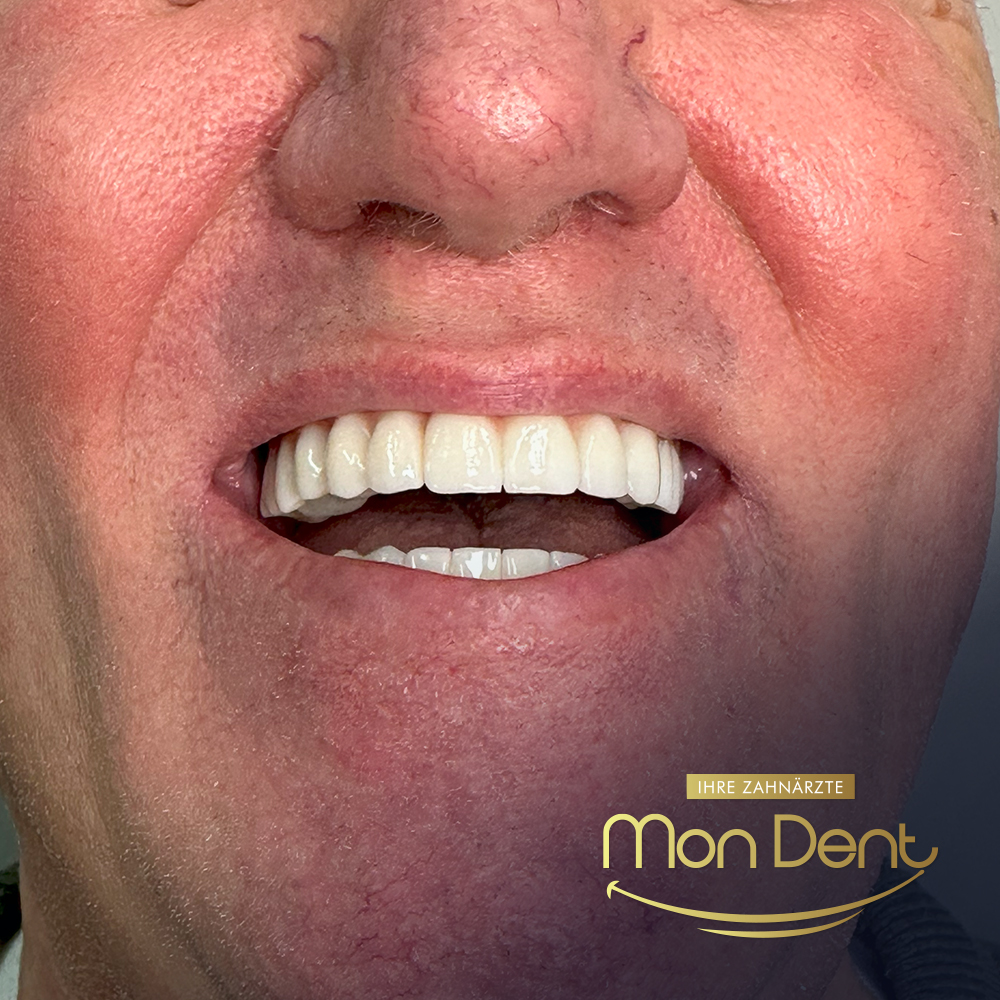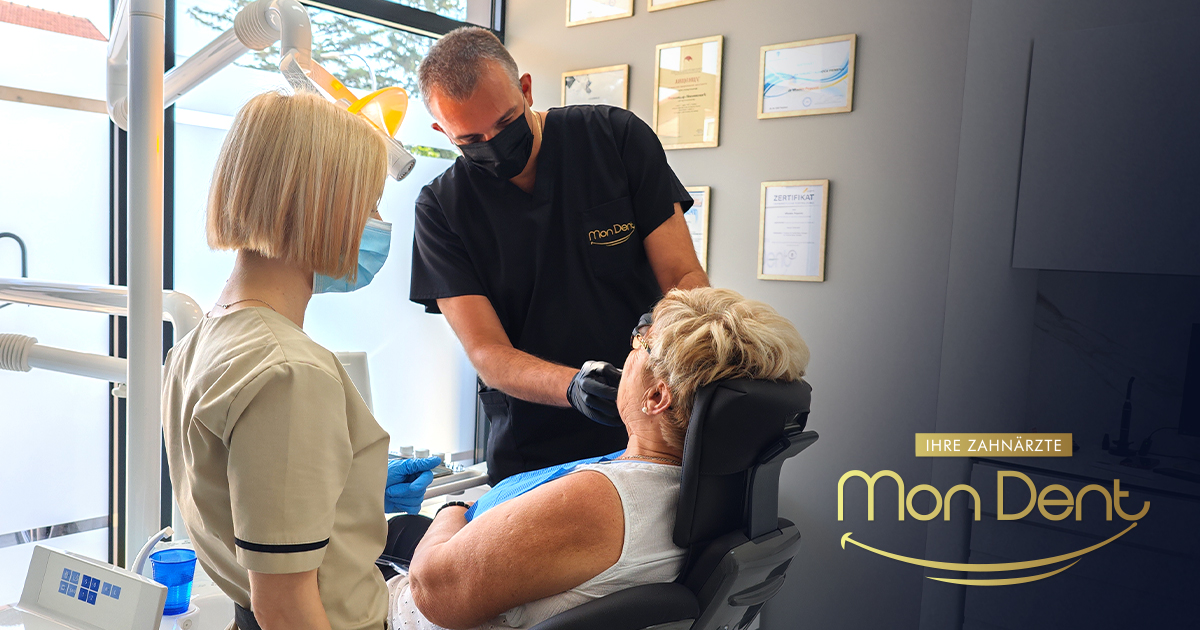Content:
- What are dental implants?
- Who is a candidate for implants?
- Advantages of implants over dentures
- Implant placement procedure at MonDent practice
- Frequently asked questions
Tooth loss is a common problem for patients and can lead to difficulty chewing, discomfort when speaking, and reduced confidence when smiling. Traditional solutions such as removable dentures or fixed bridges are not always sufficient to solve these problems in the long term, so many patients are considering dental implants as a more stable and permanent solution.
The MonDent team, specializing in implantology, takes a targeted approach to each patient using the latest technologies to achieve a healthy and natural smile. Below, we will explain what implants are, who they are intended for, and what the entire installation process looks like in our office.
We will help you discover if implants are the right solution for your current problem and your current dental condition. For a more detailed explanation and advice Make an appointment with our dentists.
What are dental implants?
Dental implants are sophisticated replacements that mimic natural teeth. They are actually titanium screws that are surgically implanted into the jawbone, serving as an artificial tooth root. The implant is later attached to the abutment (small connectors) and a final dental crown, which matches the color and shape of the remaining teeth. This results in a strong and stable new tooth that mimics the appearance and function of a real tooth.
Implants not only replace lost teeth, but also preserve the health of the surrounding structures: the important functions of the dental bone and neighboring teeth remain intact. If the lost tooth is not replaced, the remaining teeth can move and bone loss occurs. By placing implants, we prevent these unwanted consequences and restore functionality to the oral system.
Who is a candidate for implants?
Implant placement can be an excellent option for many patients who have problems with missing teeth, but it is important to meet certain conditions. Ideal candidates are people who:
- have good general health and a stable immune system,
- can regularly maintain oral hygiene and
- they do not have active gum inflammation (periodontopathy).
The appropriate thickness is particularly important and jaw bone quality at the installation site, because the implant must be stable enough to fuse with the bone. In our dental office MonDent We use 3D X-rays that have minimal radiation to accurately assess the condition of the bone.
Periodontitis and implants
Even for patients with gum disease (periodontitis), implants may be an option. Our team first repairs the gums and stabilizes the inflammation before placing the implant, so that the implant has the best chance of success. We take into account all health factors – diabetes, smoking habits and possible allergies – and advise you on the most appropriate treatment protocol.
Who is not a candidate?
In certain situations, implants may not be recommended without additional preparation or treatment. These include:
- Bone deficiency: If there is a lack of bone in the jaw, the implant will not integrate properly. In such cases, bone augmentation may be necessary prior to implantation.
- Uncontrolled system problems: Certain medical conditions (e.g. uncontrolled diabetes, osteoporosis, severe autoimmune diseases) may make healing more difficult. In these cases, it is necessary to first treat the underlying disease or adjust the therapy.
- Young people: Children and teenagers whose jaws are still developing are not candidates for implants, as the bone must be fully formed before the procedure.
If any of these factors affect you, don't worry – during your first visit we will evaluate all alternative steps. In many cases, along with expert preparatory procedures (bone recovery, gum therapy), we also help high-risk patients become candidates for implants every day.

Advantages of implants over dentures
Dental implants are often called the gold standard in tooth replacement because of their unique advantages. Below are some of the key benefits of implants over traditional bridges or dentures:
Implants give a natural look
Dental implants look and act like natural teeth – they are fixed, stable and almost invisible in the mouth. They allow for smooth chewing and clear speech without movement or discomfort. Unlike dentures, implants do not require grinding of healthy adjacent teeth, and when properly installed, they can last for decades, often a lifetime.
Healthier jaw
The implant stands alone, does not damage the surrounding teeth, and encourages natural stimulation of the jawbone, preventing it from receding. This preserves facial structure and long-term oral health, which is not the case with solutions that rely on the surrounding teeth or do not provide support for the jaw.
No maintenance complications
Thanks to the aesthetic appearance and security of implants, patients feel free to laugh, speak and eat – without fear that the restoration will fall out or be noticeable. Maintenance is simple and no different from caring for natural teeth – without special adhesives, removal or additional procedures.
All these advantages make implants a favorite solution among dentists and patients looking for aesthetic and permanent results. Dental implants will restore your beautiful smile and make it so that you no longer have to hide your teeth while smiling or eating.
Implant placement procedure at MonDent practice
IN MonDent dental office Each step of implant placement is carefully planned to make the procedure as safe and comfortable as possible. The process involves four main steps:
- Consultation and planning

At your first appointment with your dentist, we will examine your teeth and jaw in detail. We will take x-rays to accurately assess the amount of bone and find the ideal implant position. Together with you, we will plan the overall treatment plan: we will decide on the number of implants, the type of restoration (crown, bridge, implant-supported prosthesis) and we will check whether additional procedures are needed (e.g. extraction of remaining roots, bone restoration or gum repair). You will make every decision together with your doctor, and the MonDent team will carry out detailed preparation and explain all stages of the procedure.
2. Surgical implant placement

The procedure itself is performed under local anesthesia (with sedation if desired), so the patient does not feel pain – only pressure. An oral surgeon or implantologist carefully places the titanium implant in the planned position in the jawbone. The procedure usually takes about 20–30 minutes per implant, depending on the complexity. After placement, a temporary crown or protective cap may be placed on the implant, and the wound is closed with stitches. The entire process is minimally invasive, and our goal is to make you feel comfortable and safe during the procedure.
3. Healing period (osseointegration)

After the procedure, the implant is then bonded to the bone, known as osseointegration. This usually takes several months: around 2–4 months for the lower jaw and 4–6 months for the upper jaw. During this period, the implant fully integrates with the bone and becomes as stable as its own root. The patient can wear a temporary crown or bridge if it is aesthetically important that there is no gap, so that daily life is practically uninterrupted. The MonDent team monitors the healing process with regular check-ups to ensure that everything goes smoothly.
4. Placing the abutment and final crown

When the implant has fully fused with the bone, the dentist places an abutment on the implant and takes an impression of your jaw. Based on the impression, the final dental crown (or bridge) is made, adjusted to the shape and color of the remaining teeth. The finished crown is attached to the abutment, and your new tooth becomes fully functional. The result is a natural smile – the crown looks like a real tooth and is completely in harmony with your other teeth.
After this procedure, the patient usually leaves the office with a full smile on their face. The MonDent team ensures that the entire process is quick and painless, with maximum attention and professional guidance. Your satisfaction and comfort are our top priorities.
Recovery after implant placement
Recovery after implant placement is not severe. Mild swelling, bleeding and discomfort during the first few days are common. Rest is recommended on the first day, using cold compresses to reduce swelling and taking painkillers as recommended by the dentist. Food should be liquid and soft (e.g. puree, soup, smoothie), while hot, spicy or hard foods, as well as alcohol and cigarettes, should be avoided for at least the first 2 days as they can slow down healing.
It is very important to maintain good oral hygiene and attend regular check-ups to monitor the progress of healing. At MonDent, we provide full support to patients, and for those living abroad, such as in Germany, examinations are also possible at partner clinics.

Frequently asked questions
Does implant placement hurt?
The procedure is performed under local anesthesia, so it is painless – the patient feels only slight pressure. After the procedure, minor discomfort is possible, which is relieved by cold compresses and analgesics.
How long does the implant placement process take?
The surgical part takes about 20–30 minutes, followed by a healing phase of 2 to 6 months. After that, a crown is placed and the process is complete.
How are implants maintained?
They are maintained like natural teeth – regular brushing, flossing and check-ups. They do not require the additional care that dentures require.
What if I can't have an implant?
There are alternatives such as bridges and dentures that we will consider based on your health condition and wishes. During your consultation, we will recommend the best possible solution.
How much do implants cost?
The price depends on the number of implants, type of crown and additional procedures. At the first consultation you will receive an accurate quote tailored to your budget.
Why choose MonDent?
Our team of experienced professionals uses modern technology and an individual approach to ensure that each patient receives safe and quality care. With us, your smile is in safe hands.
Conclusion
After successful implant placement by the MonDent team, patients regain a wide and natural smile that restores their confidence. Implants represent one of the safest and most durable solutions for replacing lost teeth – they preserve the health of the surrounding structures, enable normal chewing, and help you smile and talk without discomfort.
If you are dissatisfied with your current solutions or are missing one or more teeth, consider dental implants as a permanent solution. MonDent invites you to a consultation to determine if implants are the right solution for you. Our experts will explain all the steps in detail and answer any questions you may have.
At MonDent, new patients can take advantage of 2D/3D jaw X-rays, which allows for precise planning of implant placement. Visit us or call us to schedule an appointment and take the first step towards your new, healthy smile. Your smile deserves the best – and we are here to make it happen.





